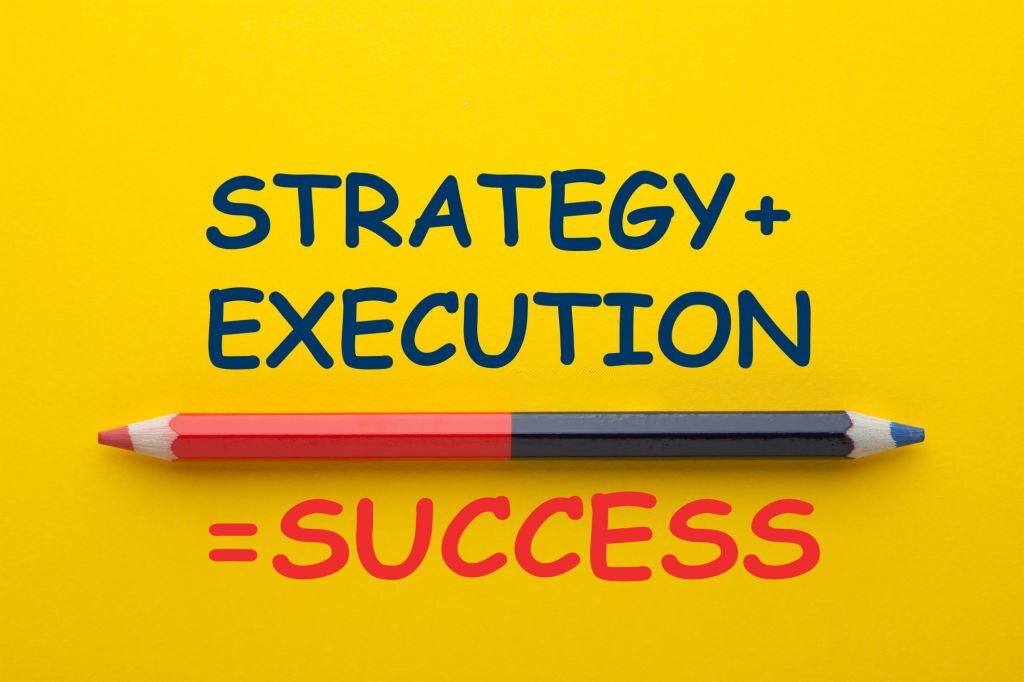Agile marketing or growth marketing is a priority-based tactical marketing approach. In agile marketing, the marketing teams identify the high-impact projects on which they should focus their efforts.
In agile marketing, the marketing team completes its work in short sprints. Once every sprint is complete, the marketing team measures the impact of the sprint on the project and continuously strives to improve the results over time.
The following are agile marketing values.
- Agility in terms of change
- Emphasis on collaboration
- Short rapid iterations
- A large number of small experiments
- Focus on data over opinions
The success of agile marketing can be gauged from the fact that 51% of marketers already use Agile marketing in their businesses.
The following are the core values of agile marketing:
Benefits Of Agile Marketing
Agile marketing owes its popularity to the wide range of benefits it provides to marketers. As a result, it has emerged as one of the preferred methods to realize digital marketing for business growth. We have discussed below the essential benefits of agile marketing.
Speed And Productivity
Many people have this question: what is growth marketing? Why your business needs it. While we have discussed growth or agile marketing, the primary reason to adopt it would be to achieve better speed and productivity in your business.
Agile marketing dramatically improves the speed and productivity of your business. Agile marketing achieves this through the way teams plan and execute their marketing activities.
Agile teams are cross-functional teams capable of finishing projects themselves. This ability of agile teams will help you quickly complete the project without waiting for other teams to finish their work. An agile team structure provides a significant productivity boost. With an agile team, you don’t need to allocate more resources to the team.
Transparency And Collaboration
Agile marketing helps improve transparency and collaboration between teams. This is because the agile methodology requires teams to have frequent touchpoints. Agile relies on tools like kanban boards and regular synchronization meetings. These tools help you to manage your project visually. In addition, agile marketing emphasizes communicating daily priorities and issues during the daily stand-up meetings. This enables your agile team to work better as a unit.
The agile methodology is transparent and holds agile teams accountable for their sprints. This transparency in agile methodology also extends to customer relationships. In agile, the client is always kept in the loop.
Flexibility
The flexibility in agile marketing is most evident in how agile marketing teams use iterative planning. As the name suggests, the core of the agile methodology is its flexibility. Agile allows marketers to react to the changing market dynamics quickly.
Easier Cross-Functional Collaboration
In agile marketing, the emphasis is put on cross-functional collaboration. Every team member could be involved in multiple projects in an agile team. It is expected from every agile team member that they should be able to collaborate with anyone else in the organization. Cross-functional team meetings and communication tools train personnel in agile marketing.
High Morale And Satisfaction
Agile teams usually are more motivated, satisfied, and engaged than their traditional counterparts. The agile methodology accords more control to the agile team on their project. There is no need to conduct multiple long meetings in agile. This is because everyone knows the project’s status and can quickly rectify any mistake. The agile environment empowers its team members to do their best work and helps them achieve high job satisfaction levels.
Execution: How Can Agile Growth Marketing Tactics Be Executed Effectively?

Now that we know about the benefits of agile marketing, it is now time to see how you can use the agile methodology to your advantage.
Create a Detailed Agile Roadmap
Marketing teams need a detailed agile road map to perform. Therefore, before starting your agile marketing journey, you should have an agile version of your marketing calendar with clear objectives and deadlines.
Ensure to communicate the high-level objectives of your project to your agile team members. They should know the strategic and business objectives of your agile marketing strategy. Have clear and measurable goals like increased website visits, shorter lead times, and a better lead conversion ratio.
A clear, agile roadmap will provide your team with clarity. It will help you quickly and easily break down your project into sprints and help you meet the deadlines.
Your agile marketing team can get entangled in short-term activities. This can have a detrimental effect on your long-term strategic objectives.
Choose the Best Agile
The next step is choosing a proper agile marketing framework. You should select the agile marketing framework that best suits your project requirements. For example, if you need to launch new products every quarter, then a 12-week Scrum cycle will be best for you. On the other hand, in a constantly evolving industry like mobile hardware development, you should go for lean time-boxed experiments. Choose the agile process that suits your circumstances in the best possible manner.
You can make the necessary adjustments in the agile process. For example, if you find daily stand-ups too much for your team, hold them twice a week. However, you should also determine those parts of your agile marketing process that need not be agile.
Agile Tools And Training
While 90% of marketers have tried some form of agile only 4% have used it for more than two years. One of four agile marketers says that lack of information and training is the biggest hurdle in implementing Agile.
To successfully implement agile marketing, you must ensure that your staff is well trained and well informed. Ensure that everyone is on the same page.
All team members must understand the agile marketing approach’s strategy, priorities, and objectives. In addition, they should know different roles in agile marketing like scrum master and product owner.
Ensure that you have a coach before you begin work in your chosen agile marketing process. To successfully implement your agile marketing strategy, you will require the help of specific tools like:
- Centralized digital backlog accessible by all team members
- Digital visual project management tools like a kanban board
- Digital markup and workspace tools for rapid collaboration
- A centralized digital marketing calendar
- A customizable dashboard
- A digital team productivity tool that calculates the productivity and identifies bottlenecks of agile digital marketing
Run a Pilot
Before you implement agile marketing in a full-fledged manner, ensure to run a pilot first. Then, you can select a pilot project and train the team members and agencies involved in the project. While choosing the pilot project, ensure that the project is not critical. Also, ensure that you choose only those people who are open to change.
Never immediately attempt to roll out agile marketing across the entire team. Instead, constantly refine your agile process in a pilot program first. A pilot program will help you limit your losses and enable you to develop an agile playbook that works for your organization.
Tackle Institutional Hurdles
To successfully implement agile for marketing, you will need to tackle institutional hurdles. The typical institutional limitations include:
- Approving an annual budget allocation for agile
- Legal approvals
- Agency agreements
- Building task-focused KPIs
- Regional and global approvals
- Media commitments
Always systematically follow your agile vision to realize the full benefits of agile marketing. Emphasize training team executives and managers in the agile process, ensuring that change is incremental. Get feedback from agile stakeholders to identify more responsive ways of doing work.
Scale At An Appropriate Time
While implementing the agile marketing methodology, many teams make the mistake of scaling too early. Not scaling at an appropriate time can make your agile transformation harder. Always scale when your team collaborates well, and your team members feel confident about the agile marketing process.
Make it a point to show the agile marketing team’s output to the rest of the organization. This will help you build an agile culture in your organization. Once the pilot project is successful, use this pilot team to train and coach other teams.
Tactics: What Specific Agile Growth Marketing Tactics can be Used?
Now that we know about what agile marketing is, its benefits, and the steps you should take to implement an effective agile marketing strategy, let’s discuss specific tactics for agile growth marketing. Here are some specific growth strategies in marketing that you can implement.
Iterative Planning And Delivery
The iterative approach toward planning and delivery is the key to agile’s increased flexibility. The iterative methodology for planning essentially means that instead of creating a comprehensive blueprint at the start of the project, you plan continuously throughout the process. Iterative planning is done through a process of ongoing inspection and adaptation.
Through iterative planning, you can change the project’s direction in response to changing market conditions. In addition, iterative planning can help you identify the areas not yielding appropriate results. This way, you can reinvest in more productive areas.
The idea behind iterative delivery is to build projects that are always ready to go live in the form of an MVP. Choose the most appropriate iterative delivery framework according to the specific requirements of your project. For example, you might choose the Scrum approach, which typically lasts two weeks. In the Scrum approach, features are delivered to the stakeholders at the end of every sprint. The Scrum approach helps you speed up feedback loops, provides greater budget control, and minimizes wasteful investment.
In the Kanban approach, one uses a prioritized list of tasks. You will need to place limits on a work in progress to deliver the most valuable items first. The Kanban approach emphasizes identifying and resolving bottlenecks at an early stage.
It is not necessary to go with a single agile marketing approach. You can always choose a hybrid model that combines two or more approaches in your agile marketing process.
User Stories
User stories align closely with agile principles. You can maximize the value delivered to your agile projects using user stories. User stories ensure that the project requirements are expressed according to the user needs that are being fulfilled. User studies are a fantastic way to communicate the project requirements to all relevant stakeholders in the agile project. As a growth marketing firm, you must make project requirements clear and easy to understand. User stories will help you achieve this goal.
Estimation And Prioritization
Apart from user stories, other techniques like affinity estimation and planning poker will help you achieve agile marketing transformation. Once your estimate is complete, prioritize your user stories according to business value. The business value will depend on your project’s specific goals and objectives. Always make it a point to review your prioritized list.
This way, you will always have a ready reference for the task backlog. Estimation and prioritization are necessary as they will give you confidence that your most valuable features are given priority. You can also make changes in your backlog according to feedback received.
Demonstrations, Retrospectives, And Stand-Ups
Demonstrations, retrospectives, and stand-ups are critical features of the agile marketing process.
Demonstrations occur at the end of every agile sprint. The demonstration involves core agile project team members and other stakeholders who are not directly involved in the agile project. The idea of conducting demonstrations is to gain feedback from the project members and other stakeholders. This feedback can then be used to make the agile process better.
Retrospectives also occur at the end of every agile sprint. In a retrospective, the agile team members reflect on their performance and try to identify any areas for improvement.
Stand-ups are meetings that occur daily. The idea behind conducting standards is to have everyone on the same page. A stand-up allows the team members to share what they have achieved during the previous day, what they plan to work on today, and any hurdles they might be facing. Stand-ups are critical to maintaining project momentum.
Effective Communication and Collaboration
Effective communication and collaboration within your agile team are essential to unlock the true power of agile. Furthermore, effective collaboration is vital as it will provide you with much-needed insights that will help you keep your team aligned with your strategic goals.
Observe how your team communicates and works together. Ensure to conduct training activities to help your team achieve its goals. You can also consider including testing activities in your agile project. Testing activities will help you get end-user feedback at an early stage.
Team Structures And Roles
Team structure and clarity regarding roles in an agile marketing team play a critical role in ensuring the success of your agile marketing project. Many agile experts recommend limiting the core agile team size to 3 and 6. This can help you maintain focus and velocity.
The following are a couple of critical agile roles that your agile team members must be aware of.
Scrum master
The scrum master’s role becomes particularly relevant in sprint-based approaches. Scrum masters help you optimize your team’s performance by removing roadblocks.
Product owner
The product owner represents the voice of the user. Therefore, the primary responsibility of the product owner is to ensure that the project delivers the maximum possible value to its end users. In addition, the product owner ensures that user focus is maintained throughout the project.
Tools: What Tools Are Available To Help With Agile Growth Marketing Planning And Execution?

To implement your agile marketing plan properly, you must utilize agile marketing tools efficiently. The following are the most popular agile marketing tools available today.
Digsite
A significant challenge agile marketers face is getting consumer feedback within a short time frame. Digsite is a tool that helps you find and engage with your online audience. As a result, Digsite helps agile marketers recruit their customers quickly. It also offers automatic reporting functionality.
The USP of Digsite is that it uses a social media-style interface. This helps Digsite to get unbiased feedback.
You can use the platform to test concepts, marketing campaigns, products, and more such things within a targeted group of customers. In addition, Digsite allows you to gauge your customers’ reactions based on their feedback.
The platform offers a wide range of activities like
- Video and photo sharing
- Image markup
- Discussions and private discussions
- Open and closed-ended survey questions
- Voting
Trello
Anyone who uses agile for a marketing agency must be familiar with the popular tool Trello. Providing continuous visibility of the status of the sprint can be particularly challenging with remote teams. This is where Trello helps. You can use Trello to manage your projects visually as it follows the Kanban framework.
In Trello, you organize the project by cards and columns. Your team members will move the card as the project or sprint completes.
Trello provides the entire team instant visibility regarding the project’s status and activities.
MURAL
MURAL is a tool that supports collaborative design. This tool allows users to create, modify and move virtual sticky notes. The designers can quickly jot down ideas on these digital sticky notes and supplement these notes with visual aids. The other teams can then offer their feedback to improve the design.
The best part about MURAL is that it allows team members to collaborate and track design changes easily.
RealtimeBoard
It is critical for marketing and customer experience teams to map the customer journey. They need to do this to identify the exact point where they can make the most impact. RealtimeBoard is a tool that supports agile, creative development for cross-functional teams. The entire team can see their concepts evolve to life through this tool. In addition, RealtimeBoard has built-in templates that make it easy for the team members to visualize the results.
Slack
Slack is a tool that brings remote and cross-functional teams together. Through Slack, these teams can quickly discuss their ideas, collaborate on projects, share files or even simply have a quick chat. Slack even allows teams to invite outside vendors to participate in the conversation.
In Slack, the teams can organize their conversations by channel. For instance, you can create a Slack channel for every project you are working on. This way, finding the right information at the right time is easy, saving time and frustration in the process. Slack even allows you to pin important content at the top of each channel for easy reference.
The main advantage of Slack is that it helps employees stay in the loop. Slack has a record of all that has happened. This feature of Slack allows new users to onboard quickly.
Conclusion: How LSS Can Help You With Your Agile Marketing Strategy
At LeanSummits, we have perfected the process of agile marketing. We have helped countless clients across various industries achieve agile marketing goals. When you choose LSS, you decide to work with an organic growth marketing agency that is an agile and other processes expert.
We will study your business, market, customers, and the attitude of your employees before devising an agile marketing plan for your business. We have years of experience in agile marketing, so we understand how to overcome various hurdles faced during agile marketing plan implementation. We will help you run a pilot first to minimize your chances of failure. Our team is well versed in a wide variety of agile tools. We will also provide agile marketing training to your personnel to boost your chances of success.
Choose LSS and ensure agile marketing success for your business. Schedule a free consultation today!



